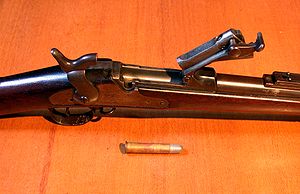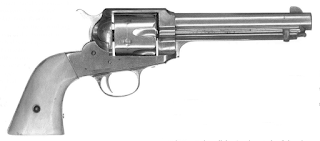Finding the women who helped open the Cariboo Country has
been difficult for one main reason; most of those involved, including the
women, didn’t rate their efforts as being important. Personally I think that
attitude is a mistake, but even as late as the mid 1950s the majority of women
would say the same thing.
For those researching and writing about the nineteenth
century information about the women is very difficult to find. It is necessary
to cross-reference several sources such as census records, birth and marriage records,
business licenses and newspaper accounts.
When information is discovered in one source the next can
prove the first inaccurate. Census records, for example may not have been
filled out by a household or if they were, (particularly in the case of
prospectors or trappers) perhaps they left immediately after recording their
presence. Many births were not recorded until many years after the event and
sometimes not at all. When Mary Pioneer’s name appeared on a mining claim was
that because she worked the claim (sometimes the case) or was it because her
husband Sam Pioneer wanted a claim twice the size of what he was allowed under
his own name?(often the case). Many
women had their names on mining licenses and some, such as Margaret Cusheon and
Eliza Ord actively worked a claim.
Records from newspapers require particular mention and
attention. Richard Wright (writer of the previously mentioned “Barkerville and
Cariboo Goldfields”) mentions two excerpts/quotes from the Cariboo Sentinel; from June
18, 1866 , “Birth, at Barkerville, 15 inst., wife of William A.
Meacham, a son.” and from Nov. 27,
1869 , “Mr. Fick, proprietor of the New England Bakery has returned
with his wife.” Perhaps the Sentinel
was keeping up with local news but definitely short on information.
Richard Wright is responsible for much of what I’m about to
quote here. I have some of the numbers from other sources such as the
Barkerville archives (marvelous resource) but a couple I have found in no other
location.
Wright has, for example compiled the names of 400 women who
appeared in the Cariboo between 1862 and 1882. He also assures us that during
the first full summer of mining along Williams
Creek
Here is a list of residents that comes directly from a count
made in the spring of 1869. Keep in mind that this is after the Great Fire
(Sept. 16, 1868) and before everyone had arrived for “the season”.
919 white males
69 white females
720 Chinese males
6 Chinese females
27 “colored” males
4 “colored” females
The first time I saw this list two things surprised me. I
didn’t think there would be that many Chinese females since very few (perhaps 1
in 500 males) came to North America (or the “Shining
Mountain California
I would have thought 10 or 12 “colored” females would have been more likely.
One of those four women was Rebecca Gibbs who operated a
laundry in Cameronton and who had arrived on Williams
Creek
With such a large difference in the numbers few women,
unless they were particularly unsavory stayed single for long. Jennifer Morris
came to Cariboo with her husband and they ran a general merchandise until he
died. The Victorian “period of mourning” which was a year had barely passed
when she became Mrs. Allan. Actually, through out her name changes she was well
known and recorded as “Scotch Jennie” because she was famous for her
administrations to the ill and injured. This was also true of prostitute Joanna
Maguire who as a member of the oldest profession usually meant mention - only
when necessary - by first name alone.
A small clue as to the class distinction that existed in the
Cariboo in the 1860s; prostitutes and hurdy gurdy girls are known by their
first names and businesswomen – including madams – are know by their lasts
names.
Despite the presence of a doctor early on and more than one
in the later part of the 1860s (and a hospital) illness was a continual problem
in the mining towns of the Cariboo. In Barkerville and Cameronton, for example,
those mine shafts which proved unproductive became toilets. The water which
flowed down Williams Creek Eastern Canada )
led to a two year long trip and contributed to several stories.
Those seven women from the winter of 1862 where;
Rosa Donnelly – miner’s wife
Anna Cameron – hotel keeper (Richard Cameron)
Sophia Cameron, wife of John Cameron (who, as mentioned,
died that winter of typhoid.)
Mrs. Janet Allan (aka Scotch Jenny), merchants wife.
Mary Winnard (blacksmith William Winnard)
I was not aware of the seventh woman but R. Wright
identifies her as an “unnamed French woman.”
Anna Cameron gave birth to the first child, Allan Richfield
Cameron on October 26, 1862
in the Pioneer Hotel in Cameronton.
This last, the birth of a child is the type of information
I’m looking for when I want background around which I can write my novel. This
is a human event, as is the need for a hospital, food and some understanding of
hygiene.
Although, considering the era, rudimentary understanding of
germs (or more accurately non-existent) and wilderness conditions about all one
could expect is some degree of cleanliness.
However, if we all keep a full set of records perhaps
novelists a hundred years from now will be able to write fiction that can
deliver a more enlightening understanding of today’s conditions and attitudes.
Remember, thousands came to the gold fields for gold but few
found enough to be considered rich. Those that didn’t find riches left. Those
few who did find riches most spent it and died broke. Of that small number who
did find a gold an even smaller number held onto it long enough to put it to
their own use but by that time they had left the Cariboo.
The women who followed the men did not, in most cases, leave
their names. But they did, with their businesses and their children, build a
country.
No, I have no idea who these women are but they are representative of the era.







































